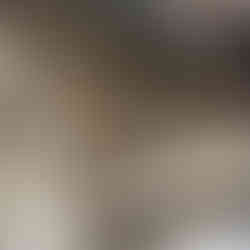
Under this title we are participating in the next SWBSS conference 2021 at the Technical University of Delft in the Netherlands. SWBSS stands for "Salt Weathering of Buildings and Stone Sculptures" and will be held for the fifth time next year in September. "The conference aims to bring together conservators, restorers, engineers, architects, academics, students and experienced researchers and to contribute thereby to the promotion of research and development within the field of salt weathering of porous materials", the organizers write on their website.
The deadline for submission of abstracts has now been extended to 19 October 2020.
As already in 2014 in Brussels and 2017 in Potsdam, ACS with Wanja Wedekind, Johanna Lutze and Justyna Hrabska will also contribute next year.
De-icing salt, colloquially also called road salt consists of at least 94% - 98% of conventional halite (NaCl) and is used in frosty regions to melt snow and ice on traffic routes. The systematic use of salt to remove snow and ice began in the early 20th century. In Paris at that time, salt was used on a large scale. Even then, the effects on the hooves of draught animals as well as on the iron substructures or bridges were described as particularly disadvantageous. However, road salt was also used on historical monuments and caused severe damage due to salt weathering to numerous buildings, especially on and around stairways. Three different salt reduction techniques have been developed and used on two separate historic sites. These are the entrance area of the historic auditorium of the Georg-August-University of Göttingen and the staircase of the medieval town hall of the UNESCO World Heritage city of Goslar, both in Germany. Before the treatment, the salt content was measured selectively with drill dust samples in a depth profile by electrical conductivity and semi-quantitative salt analysis. In addition, surface measurements were carried out using electrical conductivity, electrical capacity and damage mapping. Samples of stone types and building materials were examined petro-physically and mineralogically. In Göttingen, the sprinkling method was used, in which the salt-laden masonry surface is sprinkled cyclically with a spray mist. The drained eluate was collected and its electrical conductivity measured in 5l portions. By developing a linear regression, after evaporation and weight measurement of reserve samples, the amount of extracted salts can be approximately determined, which was archived in this case. In Goslar, both the monumental staircase to the Council Hall and the Renaissance balcony with its sculptural decoration were severely damaged by de-icing salt. In the case of the stairs the cyclic vacuum washing process was used. In this process, water is sprayed with low pressure over a cleaning hood and vacuumed out immediately after the washing process. The extracted eluate was collected and tested using electrical conductivity. The walls of the staircase and stone balcony balustrades, on the other hand, were treated with a combined method of a directed moisture stream with a poultice. For this purpose, a frame was built on the inside of the thin-walled parapet, filled with sand and kept wet continuously for a period of approx. 3 months. The water diffused through the sandstones of the parapet and the joints of the masonry and then evaporated over the contaminated exterior surfaces. A sacrificial plaster was applied to these surfaces, in which the salts accumulated. Significant amounts of efflorescence removed from there weekly to undergo a quantitative examination. As sacrificial-plaster and stone replacement mortar for the restoration, a modified hot lime mortar was used, which has excellent properties for salt-laden surfaces and for the storage of salts. The study presents the different initial conditions and discusses the different salt reduction measures in a comparative way.







Comments